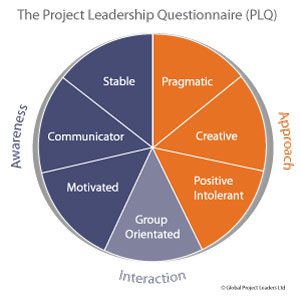Here is another lesson I learned from a real life project. This one relates to managing issues. On one occasion I was called in to look at a struggling project. The project had about 100 staff but seemed to be going around in circles. Progress had slowed if not stopped.
The first task was to get to grips with why. The problem turned out to be many problems. Almost every aspect of the project was bogged down in problems that were causing the wheels to grind to a halt.
The project was to implement SAP in a manufacturing organisation. The team doing the data conversion were waiting on the team doing the database design before they could proceed with the conversion testing. The team doing database design were waiting on feedback from SAP in Germany regarding some customisation before they could finalise their design. The team in Germany were waiting on input from the manufacturing as to how they wanted to handle component specifications. This was just one example.
All the problems had been raised as issues and were being considered but had been delayed because everyone seemed to be reliant on someone else making a decision. Schedules were constantly being revised. Just getting all the relevant people into a room seemed impossible. A sub group would write up a proposal which would be circulated for agreement, and usually the proposal would not work for another sub group. Decisions were taking weeks.
The problem was there was too much activity and not enough action. My proposal was to stop the project for two weeks and solve all the problems. The typical response was:
“We can’t stop the project. We are too far behind now!”
Finally sense prevailed. We actually identified about 30 major issues. Some were related to others and some unrelated. For each issue we identified the core problem. Where did it all start? What was the thing we needed to solve to enable subsequent decisions to be made?
We treated the issue resolution as a project running two weeks. By identifying the resources we needed to solve each issue, we were able to schedule multiple workshops and ensure everyone who needed to attend was present. For those not participating in the exercise, we had them working in a support role.
- When decisions were made they could work on the implementation of the decision.
- They were involved in gathering information to allow the decisions to be made and tested.
- Some work could proceed regardless of the issue roadblocks.
One problem we did encounter was the logistics of having enough meeting spaces. Fortunately there was a nearby hotel that had conference facilities we could use. We also had to involve people on the other side of the world in teleconferences so we basically ran workshops for 18 hours a day in some cases.
The workshops ran from half an hour to a few days. Yes, one did get resolved in half an hour. It was just a matter of getting the right people in the room at the same time. Timing was unpredictable and we were constantly shuffling timings of meetings. In fact we ended up publishing a new timetable twice a day.
All meetings were facilitated. An independent person ran the meeting to focus the group and ensure all views were considered. They were typically non experts who had nothing but common sense to contribute to a solution. Because they were not experts they could ask the basic questions that sometimes removed the complication. I remember one issue which related to catering for multiple overtime rates for different groups of people. The differences were minor. The facilitator asked if anyone had costed the expense of managing the rates versus the cost of a single rate. Another group did the exercise and found it was cheaper to have a single rate at the higher level than lots of minor rates.
At the end of the first week, we were down to about ten significant issues. Some people were able to get back to project work as roadblocks had been cleared. After two weeks we were down to about two or three issues that were still being worked on.
What we learned was that sometimes it is best to stop. If things are getting out of control remember the old adage. When you have dug yourself into a hole, stop digging. The project team had a much different view on resolving issues. As the project proceeded, they gave much more importance to fixing problems. If an issue came up, the Sponsor made sure everyone who was involved made themselves available to resolve the issue as soon as possible. The Sponsor required all significant issues be escalated to him, and the impact of the issue on the project had to be stated as part of that escalation process.
Another lesson was that all experienced project managers know there should be a proper issue resolution and escalation process in place but business leaders may only pay lip service to such a process. It is only when things start to go pear shaped that they see the value in the process. Just because it is documented some where, does not mean it will be accepted or followed. Occasionally a bit of pain is needed to teach people the value of a project process.
Neville Turbit is principal of Project Perfect. Project Perfect sell Project Management Software as well as consult on projects and undertake Microsoft Access Development



